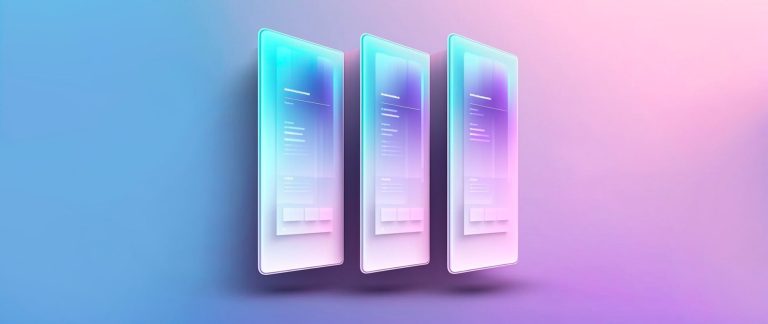Every sales lead is different. Some pass on what your business offers, others become a quick sale. And in the best case scenario, when the sale is quick, the client becomes a long-term supporter, and they refer you to everyone they meet.
To plan a winning sales and marketing strategy, you’ll want to know exactly which leads turn out to be pure gold. That’s where an ideal customer profile comes in. This profile will give your team the information they need to reach the right customers.
What is an ideal customer profile?
An ideal customer profile (also known as ICP or an ideal buyer profile) is a detailed, data-driven description of the kind of customer that would be most valuable to you. This could be because they have a long-term commitment to your product, have a faster sales cycle, or refer others to your business. An ICP is a business-to-business (B2B) concept, meaning it targets other businesses that stand to benefit from what you offer, as opposed to individual customers.
Most ICPs take the form of a short paragraph or list (just one to two sentences total). For example, “Our ideal customer is a business-to-consumer (B2C) company in the video game industry, based in the US or Canada, that has a following on their social media platforms of at least 100,000 people and a branding budget of at least $1 million.” An ideal customer profile framework can help you identify target accounts with the highest chance of turning into high-value customers. This process is the foundation of account-based marketing campaigns.
Key components of an ideal customer profile
There are a number of common attributes you can consider when developing your ideal customer profile. The strongest ICPs pick and choose among these attributes to identify five to seven that are most essential in your perfect customer.
Here are a few ideal customer profile questions to ask yourself while evaluating the data:
Industry. What field is your ideal customer doing business in?
Number of employees. What size company is your ideal customer? How big is their product team, customer success team, or sales team?
Valuation. Is your ideal customer a multimillion-dollar operation or a scrappy startup?
Budget. How much money does your ideal customer have to spend in a year? How much would they be willing to spend on your product?
Annual revenue. How much money does your ideal customer work with in a year?
Funding structure. What funding sources does your ideal customer draw from? Who are their investors?
Location. Where does your ideal customer do business? Do they have a brick-and-mortar location or sell primarily through ecommerce?
Age. When was your ideal customer founded? How long have they been operating?
Customer base. What demographics does your ideal customer serve?
Goals. What is your ideal customer’s mission? How do they go about achieving it?
Technology use. What existing technologies does your ideal customer use in their regular operations?
Network. How connected is your ideal customer to others in the industry? How likely are they to refer your product to others?
Challenges. What pain points or bottlenecks does your ideal customer experience? How might you solve those problems?
How does an ideal customer profile differ from a buyer persona?
ICPs and buyer personas are similar concepts but they differ in a few key ways.
How ICPs and buyer personas are similar
Details. An ideal customer profile is similar to a buyer persona in that both are detailed descriptions of an organization’s ideal customers. Both detail important traits like budget and pain points.
Overlapping goals. Some organizations like to include an ideal potential buyer persona or two within their ICP to further specify their target market. For instance, a coffee subscription retailer who sells to businesses may identify their ICP’s ideal buyer persona as an individual who values sustainability.
How ICPs and buyer personas are different
Scope. ICPs have a wider scope than buyer personas; they focus on company-wide traits like the number of employees and funding structure. By contrast, buyer personas zoom in on individuals and consider things like their age range and interests.
Business type. ICPs and buyer personas differ primarily in business type—an ICP is a B2B tool, which means it describes a fictitious company rather than a fictitious individual. A buyer persona is typically a B2C tool and describes an individual shopper.
How to create an ideal customer profile
Follow these steps to get started identifying your ideal customer:
Identify your highest-value customers
Compare customers
Reach out to current customers
Narrow down a few key attributes
Seek potential customers
1. Identify your highest-value customers
The best ideal customer profiles are data-driven—meaning they’re developed from real data from previous sales rather than projections from market research. Get together with the key stakeholders in your company to take a look at all of your existing customers, then identify which ones have given you the most value and why.
Which customers had the fastest sales cycle, meaning how quickly did they go from a prospect to a paying customer? Are there accounts that turned into committed, long-term customers? Which customers referred your product to others? Use questions like these to narrow down your customer base to the handful of best, highest-valued customers.
2. Compare customers
Once you have a list of your existing high-value customers, it’s time to look for commonalities. What is it that makes these customers especially valuable? What company attributes could be driving that value? Do they share the same pain points?
3. Reach out to current customers
For more qualitative customer data, talk directly to your current high-value customers. Distribute a customer satisfaction survey or ask them a few questions to get an even better sense of why they purchased your product and what considerations they had.
4. Narrow down a few key attributes
Determine five to seven attributes that your most valuable customers share and compile these into a sentence or list. For example, “Our ideal client is a B2C startup in the tea industry based in the UK that has a budget under $10,000 and a need for low-cost drinkware. Their customer base values visually appealing design.”
5. Seek potential customers
Once you have your ICP, you can put it to work. Compare your list of ideal attributes with existing companies to identify high-quality leads and target customers directly. You can also use your ICP to align your company’s sales and marketing teams. Tailor your product development and marketing efforts to craft the most successful sales strategy for your ideal customers.
Ideal customer profile FAQ
How can I gather the necessary data to create an ICP?
To gather the data for your ICP, look at your current customers, identify which are the highest value, and look for similarities and patterns among them. During your customer profiling, you can also reach out to your high-value accounts for customer feedback to determine why they purchased your product and what considerations they had.
Can I have multiple ICPs for different products or services?
Yes, you can have multiple ICPs. In fact, creating an ICP for each product or service that you offer can give you much better insight into your successful sales. At the very least, consider having one ICP per type of product that you offer. For example, if you’re a merch company that sells branded products to businesses, consider having one ICP for branded stationery and another for branded clothing items since these products may appeal to different target audiences.
How often should I update my ICP?
Try to reevaluate and update your ICP at least once a year. Even with a strong ICP that’s giving you great results, you may find when gathering more company data that you can make a few tweaks to your sales process or marketing strategy for even better lead generation and sales.






0 Comments